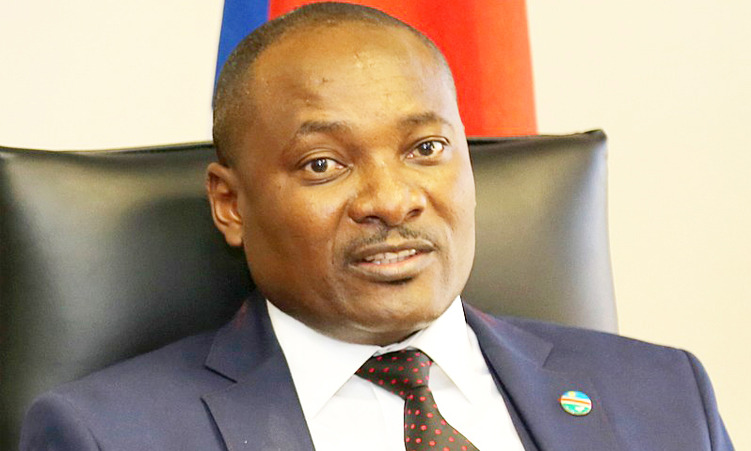The minister of environment, forestry, and tourism, Pohamba Shifeta, says about N$255 billion is needed to combat climate change in Namibia from 2021 to 2030.
Shifeta was responding to questions asked in parliament last week.
Of this amount N$108,4 billion (US$6 billion) would be used for adaptation measures, and N$146,6 billion (US$ 9 billion) for mitigation.
Shifeta said the amount would be sufficient to implement the Nationally Determined Contribution (NDC), a climate action plan to cut emissions and adapt to climate impacts.
“We are the most vulnerable to the effects of climate change. We are a net sink of carbons.
“We absorb more emissions than we emit,” he said.
In March, Shifeta said at least 90% of the required funding to implement the NDC would be sourced from multilateral and bilateral sources, and only 10 % domestically.
Shifeta said as a developing country, Namibia is eligible to receive foreign funding for climate change.
In 2021, the ministry submitted the NDC to the United Nations Framework Convention on Climate Change.
The minister said Namibia has mobilised more than N$5 billion to implement various projects countrywide since 1992.
‘Under adaptation, Namibia has prioritised a list of 36 measures comprising 84 actions under eight sectors,” he said.
Shifeta said several projects were implemented years ago, such as ‘Empower to Adapt – The Creating Climate Change Resilient Livelihoods through Community-Based Natural Resources Management in Namibia (CBNRM EDA)’ to a total of US$10 million, the ‘Climate Resilient Agriculture in Three Vulnerable Extreme Northern Crop Growing Regions (Crave)’ to a total of US$10 million, the ‘Ecosystem-Based Adaptation Project (Eba)’, worth US$ 10 million, and the ‘Improving Rangeland and Ecosystem Management Practices of Smallholder Farmers Under Conditions of Climate Change’ at Sesfontein, Fransfontein and Warmquelle (Irema)’, worth US$ 10 million.
COMMUNITY INVOLVEMENT
Shifeta said a total of 31 grants for community projects in the 12 political regions have been awarded through the grant facility to the tune of N$112 billion (US$7 million).
All the projects have been designed to benefit the most vulnerable across the country,” he said.
Shifeta said to this end, the Green Climate Fund (GCF) was established by the UN to serve as an operating entity of the financial mechanism.
He said Namibia can source funds from the Adaptation Fund, the Special Climate Change Fund, and the Global Environment Facility.
Namibia is planning to reduce greenhouse gas emissions by 91% by the year 2030.
CONSERVANCY PROGRAMME
Shifeta said the conservancy programme has thus far generated close to 5 000 jobs, including 998 community members employed at conservancies.
“Conservancies generate cash income and in-kind benefits for rural communities, totaling N$91,7 million and benefitting more than 238 701 community members.”
The ministry is also engaged in providing meat for community and national events to the value of over N$ 9,2 million,” he said.
Shifeta said incidents of human-wildlife conflict, however, remain of concern as they seem to overshadow the benefits and opportunities created for Namibians.
“These incidents mainly involve infrastructure damage, livestock losses, crop damage, and in some unfortunate incidents the loss of life and injury to people.
“Together with other stakeholders, we are involved, and are implementing measures such as elephant and lion collaring, early warning systems, lion ranger programmes, the construction of predator-proof kraals, the translocation of problem-causing animals, declarations, and the putting down of problem-causing animals and wildlife population management,” he said.
Source : TheNamibian
















